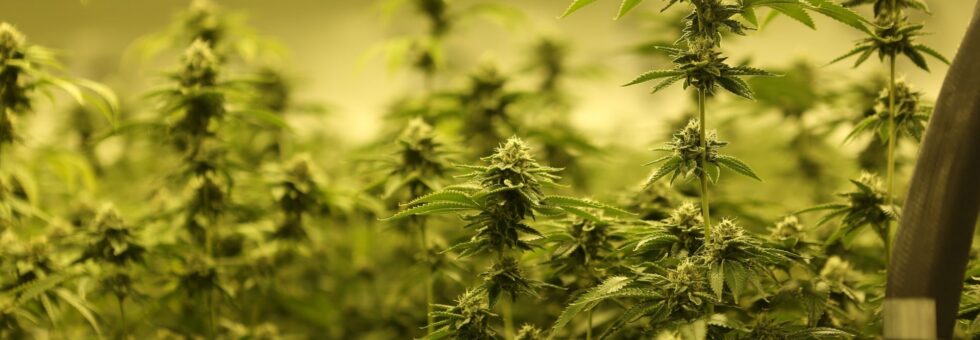You may have heard about hemp before. You might even have some inkling that it can be used for paper and different types of fabrics & textiles. But did you know that hemp can be used to create strong, durable, ecological building materials? Read on to find out more!
What Is Hemp?
We’ve already discussed at length what hemp is, what its uses and benefits are, and what types of jobs it encompasses in the cannabis industry. But to sum things up, hemp is a plant, a member of the cannabis family, but it’s not the same as marijuana. Hemp concentrates on minimizing THC, while marijuana concentrates on increasing the THC content. To be considered hemp, a cannabis plant needs to have less than 0.3% of THC.
“Cannabis Hemp is capable of producing significant quantities of paper, textiles, building materials, beer, sunscreen, rope, hempcrete, soaps, energy bars, paper, protein powder, food, medicine, hemp shoes, hemp hats, hemp jackets, paint, hemp robes, hemp bracelets, hemp sandals, hemp seed butter, diapers, CBD Oil, detergent, varnish, hemp sheets, hemp towels, hemp paper, clothes, oil, ink, and fuel.
Dr. Chris Norris, Physiotherapist, neurologist, Founder & Editor of SleepStandards.com
Industrial Hemp & Its Uses
Now that we’ve established what hemp is, we can talk about its industrial uses. Believe it or not, hemp is a very diverse plant! In industrial uses, its possibilities are endless since it’s actually a more eco-friendly way to make rope, paper, textiles (like clothes, carpets, etc.), plastics, and even superfoods!
“Industrial hemp has been used in the construction of paper for many years. Though it may not be in all types of paper, some have used it as a key material for over 100 years. They are key ingredients for nutritional products, 3D printing filaments and building materials too.”
Dr.Giuseppe Aragona General Practitioner & Medical Advisor at Prescription Doctor
Hemp For Building Materials
“One of the most exciting and under-reported uses of hemp is as a replacement for petroleum-based materials in new building construction. Using hemp as a replacement for plastic makes sense because it’s less toxic and biodegradable.”
Laura K Nyström, Vice President at Primo PR Agency
Laura K Nyström, Vice President at Primo PR Agency
The two main competitors for building materials made from hemp are hempcrete and plastic. Both are extremely durable, easy to manage, and to top it all off, eco-friendly due to the amazing agricultural benefits hemp provides. But today, we’re going to concentrate on hempcrete specifically, detailing its main advantages.
“Hemp is used for hempcrete, which works well for insulation. It is also fully recyclable, meaning that once demolished it will not be put into landfills. It is great for building structures as it absorbs water and is resistant to natural disasters because of how flexible it is.”
Dr.Giuseppe Aragona General Practitioner & Medical Advisor at Prescription Doctor
So, why use hempcrete?
Dr. Chris Norris, a physiotherapist, neurologist, and founder & editor of SleepStandards.com, states that hempcrete has many advantages, like excellent insulation, non-toxicity, water absorption, and full recyclability. Let’s dive into each of the points:
Insulation
“Whether poured into molds or used in block form, hempcrete absorbs heat during the day and stores it in the thermal mass of the wall. Once the sun goes down, this heat is slowly released into the building. The insulation characteristics of hempcrete stem from its ability to trap heat inside hollows within its structure.”
So hempcrete works similar to adobe, keeping houses cool during the day and warm and toasty in the cold of the night. All this, naturally!
Non-Hazardous and Non-Toxic
Hemp is the perfect tool to work with when it comes to construction, since it is both non-toxic and non-hazardous, meaning it doesn’t post any risks to the people involved in the building development as well as for any future tenants.
Fully Recyclable
“Because hempcrete is bio-based, it is recyclable. When a hempcrete wall or structure reaches the end of its useful life, it can be broken apart and used as a mulch.”
Dr. Chris Norris, Physiotherapist, neurologist, Founder & Editor of SleepStandards.com
Dr. Chris Norris, Physiotherapist, neurologist, Founder & Editor of SleepStandards.com
Another point for eco-friendliness. Hemp is fully recyclable, meaning that you won’t end up with a useless pile of rubble after you tumble down a hemp-made building. But rather, you’ll be able to repurpose this material! Mother Nature approves.
Natural Fire Resistant & Water Absorbent
According to Dr. Chris Norris, hempcrete is known for being fireproof, repelling mold and mildew, absorbing moisture and regulating humidity levels inside the building. To top it off, it’s also known for being a better choice than concrete when it comes to earthquakes due to the flexibility of the material. That’s another point for hemp building in our book.
Natural Pest Resistant
“While hempcrete can sometimes take on the appearance of a fiberboard, it is far more robust than that lumber byproduct. It cannot be compromised by rats, mice, insects, or other types of pests.”
Dr. Chris Norris, Physiotherapist, neurologist, Founder & Editor of SleepStandards.com
Say hello to hempcrete & goodbye to pests.
Aside from this, hemp can also be used to seal your home, creating a denser and better air-tight seal than concrete or mortar. And it’s also perfect for renovations or additions due to its versatility, affordability, fire-resistance, anti-humidity properties, and pest resistance! So if you’re looking to add something to your home or to renovate your living room, hempcrete may be just the material you need to make a new hemp building!
Conclusion
“When it comes to products that can be made from hemp, the possibilities seem to be endless. Hemp may not get you high, but it can do pretty much anything else you can imagine. This low-THC variant of the cannabis plant has a dizzying array of uses, including everything from food to medicine to rope to bricks and more—somebody even made a sports car out of hemp.”
Dr. Chris Norris, Physiotherapist, neurologist, Founder & Editor of SleepStandards.com
Without any doubt, hemp for building material is an extremely versatile tool. It can create a flexible, recyclable, fireproof, waterproof, and pest-proof material that will be sure to improve any construction, as well as avoid any future problems. If you want to learn more about hemp, its uses & benefits, our Industrial Hemp & CBD course is exactly what you need! In this program, you’ll learn the history of cannabis, get an introduction to horticulture, and comprehensive studies of both industrial hemp and CBD. We’ll dive into cannabis laws & policies and other information you will need to move forward in this industry. In the end, you’ll come out knowing everything there is about growing, processing and selling industrial hemp for fiber and seed or CBD. Learn more about our courses, programs and certifications here!

